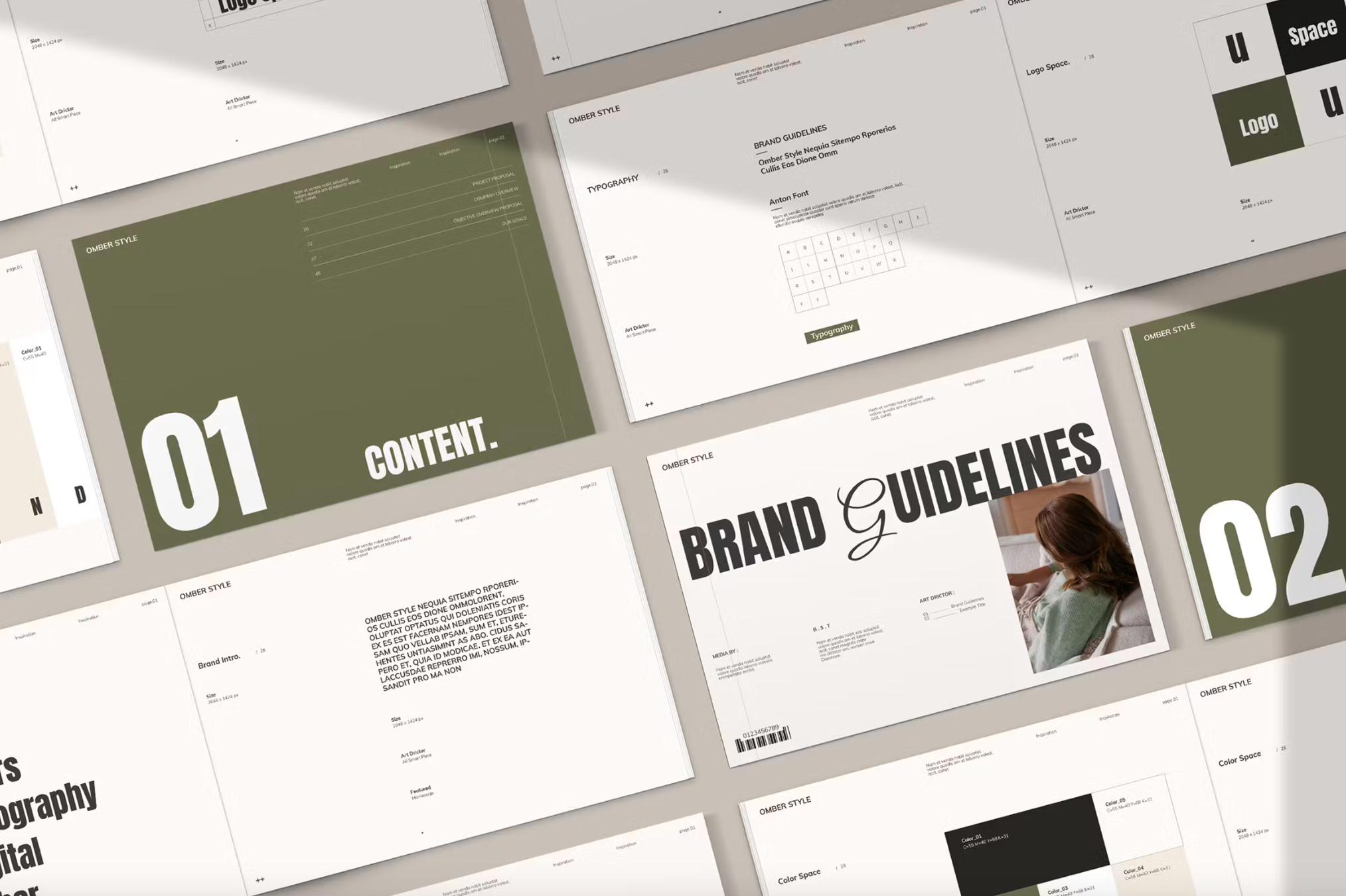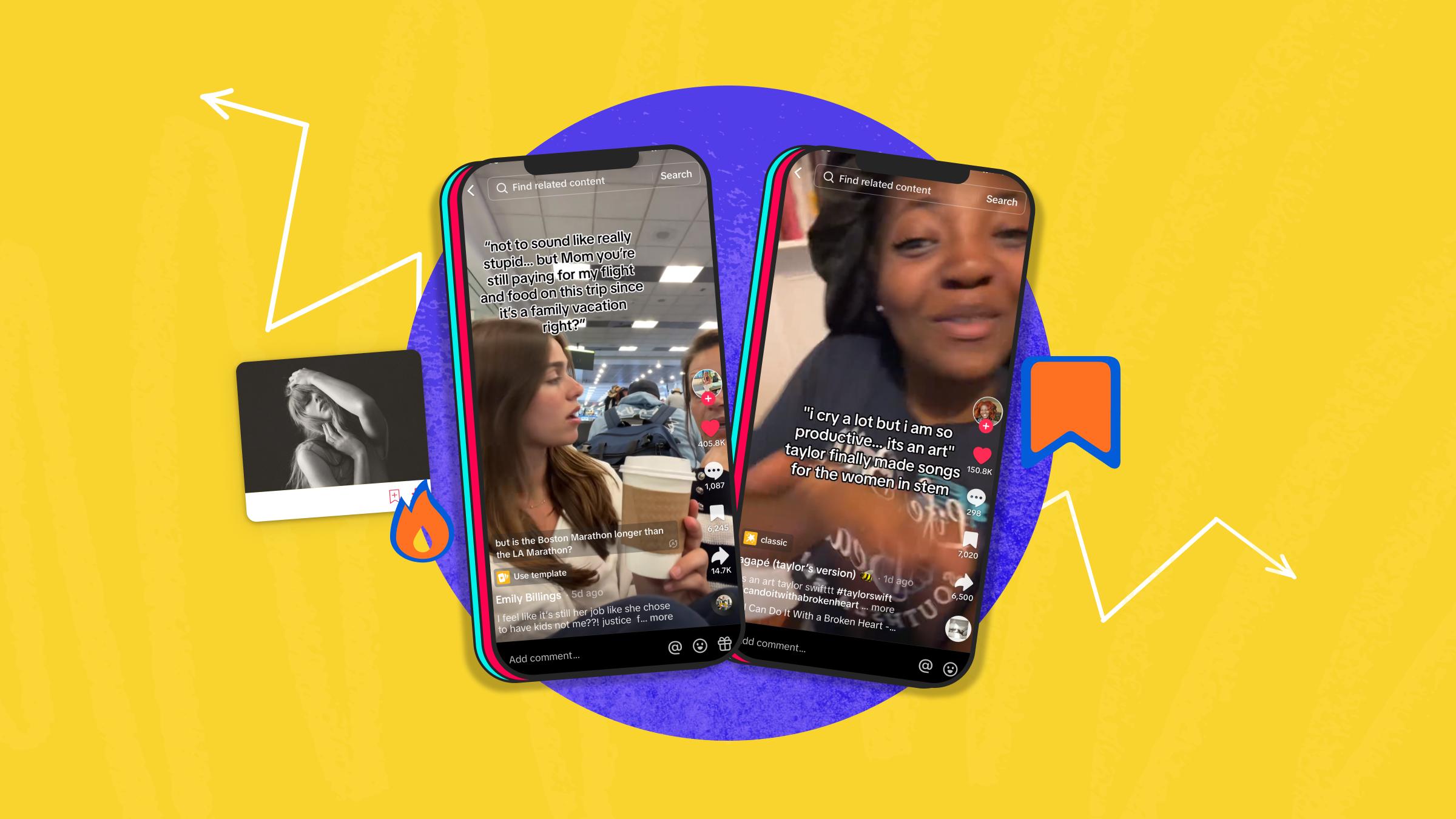The ultimate goal of an MVP is learning. Discover tactics for testing the value of your MVP.

An MVP is much more than just a minimum product. It is perfection through subtraction, the best bang for your buck, and the best reality check you can get. When you think about it, testing an MVP is probably the most important step to success for companies.
We’re going to take a look at how highly successful companies built the right MVP for the right reasons to help them refine their business idea and get people buzzing about their products.
You’ll see, in fact, that an MVP doesn’t even need to be a product. It just has to be a smart way of testing your assumptions so your product roadmap is much less bumpier.
What’s an MVP?
A common misconception is that an MVP is a minimum product with the least amount of features to rush it to market. This couldn’t be further from the truth. While you want to get something to market to test your business assumptions, it doesn’t always need to be a product. And if it is a product, it certainly shouldn’t be something that’s one feature away from falling apart altogether.
An MVP is not an excuse for a crappy product. MVPs are all about learning, and you don’t learn anything from a crappy product except that people don’t like crappy products.
Laura Klein, VP of Product at Hint Health, puts it bluntly (and effectively).
If we look at the textbook definition, “The minimum viable product (MVP) is a strategy used for fast and quantitative market testing of a product or product feature.” But this definition can be exploited to focus only on the “fast and quantitative” part. If you break it down, you’ll see that an MVP really should:
- Test a product hypothesis using minimal resources.
- Accelerate learning.
- Reduce engineering waste.
- Get the product to early customers as soon as possible.
The ultimate goal of an MVP is learning. Because unless you’re getting valuable insights from the MVP, it doesn’t matter how many engineering hours you spent or how fast you got it to market. It’s not about proving if you can build it or even how, but why customers should even care in the first place. That’s what makes building an MVP an essential step of the product development process.
So, with that understanding, let’s look at some smart ways to build your MVP as an experiment.
Testing your MVP
The complexity of your MVP depends on the type of product you’re building, and different kinds of MVPs can range from vague AdWords tests to early prototypes.
Once you have determined the hypotheses you need to test with your MVP, here are some of the testing techniques you can put to use to get reliable data from actual users and utilize it. We go into much greater detail in our Guide to MVPs.
Customer Interviews
In a startup no facts exist inside the building, only opinions.
Steve Blank, co-author of The Startup Owner’s Manual and creator of the Customer Development Methodology
In his book “The Four Steps to the Epiphany”, he talks about the Customer Problem Presentation, an important part of the customer validation process that helps you test your hypotheses with actual customers.
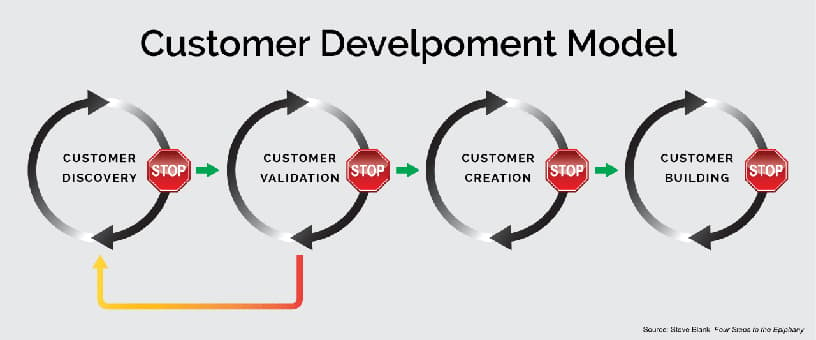
Unscripted interviews with customers are designed to elicit information about the problem your product is trying to solve. These interviews are supposed to be exploratory rather than persuasive. You’re not selling anything, you’re just listening and learning.
You can help guide the conversation by listing the problems you assume your product will solve and then asking for opinions and a ranking of each problem.
These interviews can be a goldmine of actionable insights. Even if customers don’t really care about what you thought they did, at least you now know how to pivot to suit them. And the best part is that this will likely cost you next to nothing (aside from your time).
Landing Pages
You can also get out of the building virtually. For those unfamiliar with the term, the landing page is the first page visitors hit on your website.
It’s a marketing opportunity where you can explain your product’s features and have them sign up, but more importantly, it’s a great MVP that lets you test your hypotheses against market expectations.
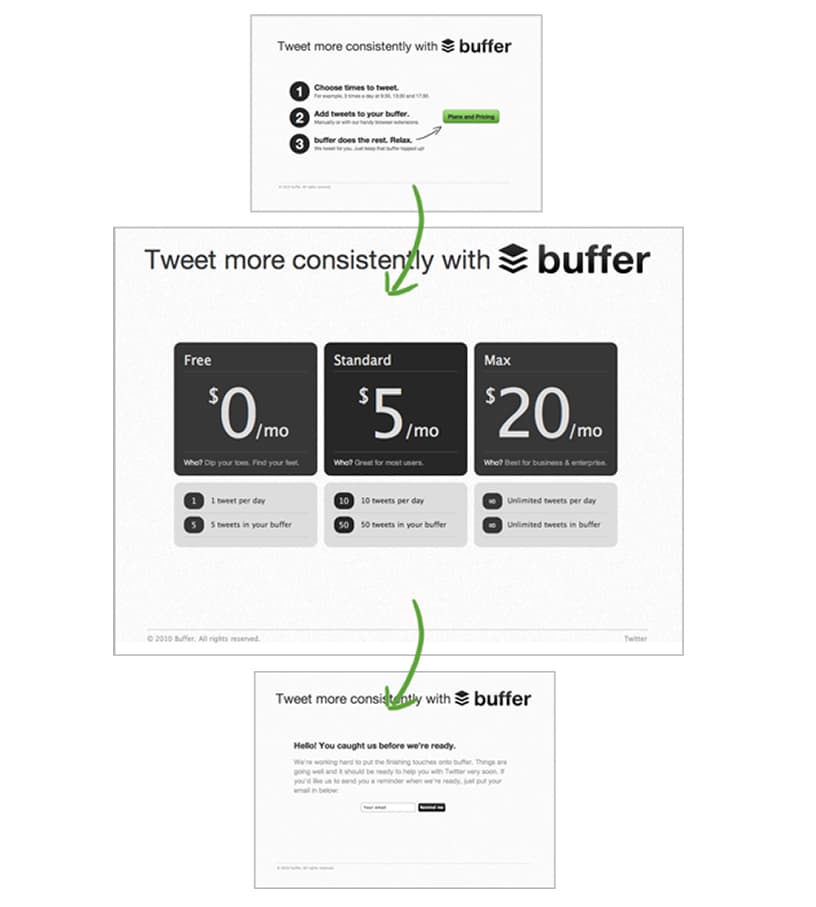
Landing pages are often misused as glorified email capture pages, but they can be used more extensively to test hypotheses.
Joel Gascoigne fleshed out the first landing page for Buffer and used that to gauge demand for various features and price plans rather than just to build up a mailing list. It was as simple as adding an extra page between the features page and the signup form.
The interstitial page showed a pricing table, and the visitors could select the plan that appealed to them. These extra clicks not only showed the visitor’s interest in the product but also gave the team real-world feedback on the pricing levels.
Kate Rutter, instructor at Tradecraft and co-founder of Luxr, is a big fan of using landing pages to “sell first, build later”. In order to be most effective, landing pages need to be able to provide the right information to customers in the right context.
Remember that the objective is validated learning, so collecting visitor analytics with tools like Google Analytics, KISSmetrics or CrazyEgg is the most important part.
You also need an effective value-proposition and call to action. For deeper insights, you can run A/B tests on the page to reveal what messaging drives the most conversions with different audiences.
Ad Campaigns
Surprisingly (and maybe even counterintuitively), ad campaigns are a great way to validate the market. Google and Facebook are platforms that both let you drill down demographics to the particular target customer you’re trying to reach, which lets you run a low-fidelity test to see which features or aspects of your product are most appealing.
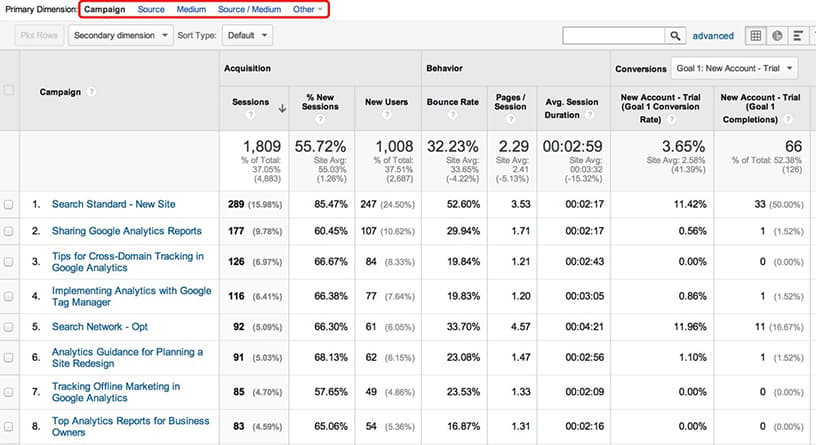
Running a campaign through these services gives you statistics like click-through-rates and conversions which can be valuable information in determining what aspects of your product are most compelling.
You can take it a step further and also buy banner ads for a few simple and complex keywords, then drive them to your landing page. Now you’ll know what interested them versus if they’re actually compelled to sign up for the product.
Digital Prototypes
If you’re more the visual type, mockups, wireframes and prototypes can all demonstrate the product’s functionality in a way that resembles the real deal. These prototype MVPs can range from low-fidelity sketches to screenshot previews to more complicated “dummy” applications.
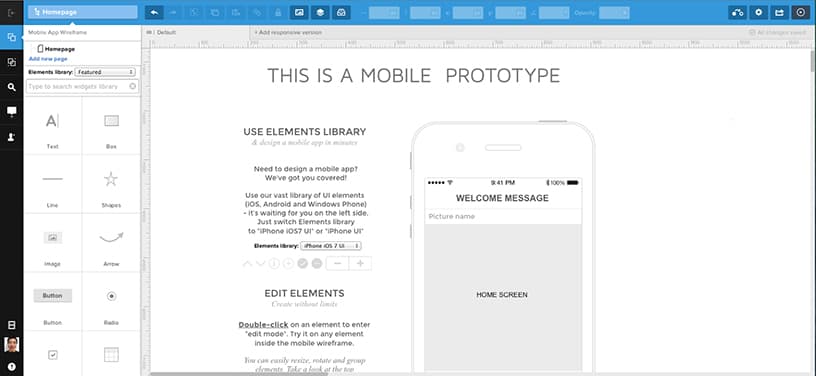
You can use collaborative wireframing and prototyping tools like UXPin that let you express what you want to build and share those ideas transparently with the team. Digital prototypes are nice because anyone who can use Powerpoint has enough technical prowess to build them, and it immediately takes your product from concept to functionality without a ton of money sunk.
Paper Prototypes
Similar to Digital Prototypes, except these are physical, either made of cutouts or even drawn on paper to demonstrate your product’s user experience.
The advantage with paper prototypes for MVP testing is that they can be used by anyone on the team, from product managers, graphic designers, sales folks and end-users. They require very little explaining because it hands you an actual representation of the product.

For physical product development like phones or chairs etc. this technique is invaluable. We cover digital and paper prototyping in greater detail in our Guide to Wireframing e-book.
Explainer Videos
If a picture is worth a thousand words, then a video demonstrating your products user experience is worth a million. The most famous example of this is Dropbox.
They began with a 3 minute video showing Dropbox’s intended functionality, which increased signups from 5,000 people to 75,000 overnight—all of this without a real product. Of course it also helped that tech-savvy early-adopters appreciated the easter-eggs and humorous references throughout the video itself.
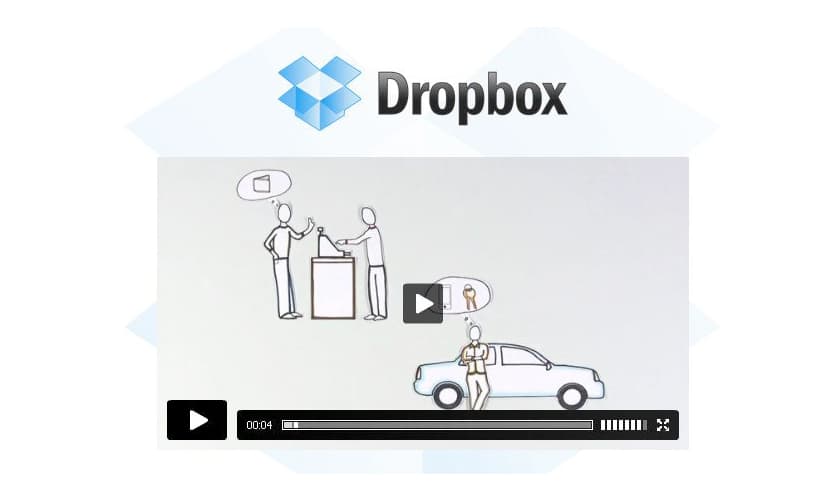
Dropbox’s explainer video served as a brilliant validation of the market before the founders ever had to invest in the infrastructure and development. Reaching the target customers is difficult enough, especially when you’re designing to solve a problem that many users might not even recognize they have.
For Dropbox, saying they were offering a “seamless file-synchronization app” wouldn’t have had nearly the same impact. The explainer video instead walks potential customers through what the product is and clearly demonstrates how it helps them, eventually leading to why they would want to pay you for it.
Fundraising
Crowdfunding websites like Kickstarter and Indiegogo, among others, also provide a great platform for running MVP tests because it literally assigns a dollar value to your idea.
These websites are essentially collections of MVPs where the market response is judged by the amount of money donated. In addition to the fundraising, this tactic also gives you access to a group of highly interested and actively involved early-adopters who have a stake in the success of your product.
These “earlyvangelists” are great for building word-of-mouth as well as providing continuous feedback along the way.

You don’t need to look far to hear about success stories that began as Kickstarter campaigns. The Pebble e-paper smartwatch and Ouya gaming console are perhaps the more popular ones, raising millions of dollars and building buzz even before development began.
Of course, some of the hallmark features of campaigns include a compelling narrative, effective explainer videos and useful rewards or incentives for people to back the project.
Manual-First (aka “Wizard of Oz”) MVP
Rather than building a video or coding a framework, an alternate option for the initial stages of market validation is to deliver the product or service manually.
The “Wizard of Oz” MVP comes from the idea of putting on the impression of full functionality, essentially faking it until you make it. It’s gruntwork, but it’s cheap and gets the job done. Customers think they’re experiencing the actual product, but in reality it’s all manual work done behind the scenes.
Arram Sabeti, founder of ZeroCater started with a giant spreadsheet that he used to keep track of companies and caterers he could connect with. Zappos began the same way, with founder Nick Swinmurn uploading photos of shoes from local shoe stores on a website to gauge demand for his online store. When someone ordered the shoe online, he would run back to the store and buy it.
Instead of investing prematurely in infrastructure and inventory, Swinmurn had the chance to answer the question of whether their product would first be accepted by the market.
This approach also allows for greater interaction with customers. Observing actual customers first-hand is always more useful than a hypothetical survey, and it’s the fastest way to discover whether you’re solving real-world problems.
The expedited learning, albeit at a small-scale, provides opportunities to test many assumptions you might be making about the product or the marketplace. By doing it all manually, you give yourself the chance to try different things on-the-fly to see how customers react before you scale. To the customer of course, the product simply works and what you do behind the scenes is irrelevant.
These MVPs undoubtedly require a significant effort but can be ultimately worth it for the focus they provide on the problem rather than the solution. Zappos for example eventually grew into one of the most successful online businesses and was acquired by Amazon for $1.2 billion in 2009.
Concierge MVPs
The Concierge Test is similar to the Wizard of Oz MVP, except instead of faking a working product, you’re upfront about the manual work and the product or service is delivered as a highly customized service to selected customers. In a nutshell, it’s a Wizard of Oz MVP with pretty presentation.
Rent the Runway tested its online dress rental business model by providing an in-person service to female college students where anyone could try the dress on before renting. This validated their riskiest hypothesis that women would rent dresses and served as a great concierge MVP that put the business in front of customers for feedback.
Time is valuable, especially at this stage and running through the process manually also reveals other aspects of the customer experience that can prove valuable later on.
Piecemeal MVPs
As a mix of Wizard of Oz and Concierge techniques, the Piecemeal MVP creates a functioning demo of your product using existing tools and services to deliver the experience. For example Groupon, in its early stages, was a combination of WordPress, Apple Mail and an AppleScript that generated PDFs manually as orders were received from the website.
Rather than investing time and money into building your own infrastructure, the product can be built upon existing platforms and services, using bits and pieces from various sources to make your version of the product. Think of it as the “Frankenstein MVP”.
Instead of putting in resources towards building a real product, all of these MVP answer the more important question first: are you building something that customers will use and pay for?
Test, Tweak, Repeat
In some ways, building an MVP actually creates additional work because this process of iteration and validated learning requires significant investment of time and energy. That’s why it’s important not to get bogged down by unnecessary details and overhead when building MVPs. Eventually, the objective is to figure out if the effort you’re putting in is worth it, and you don’t want to spend time working on something users won’t pay for.
It’s also important to realize that when testing your hypotheses, you might want to consider using multiple MVP testing techniques. Maybe your business model requires a combination of Concierge MVPs and Adwords Campaigns. The important lesson to take away here is to build only if you have assumptions to test. “If you build it, they will come” is a fallacy. Instead think of it as, “If you test it, you’ll know why they did (or didn’t)”.
For more creative inspiration, head over to the Elements Blog to read up on the latest trends, tips, interviews and roundups!
